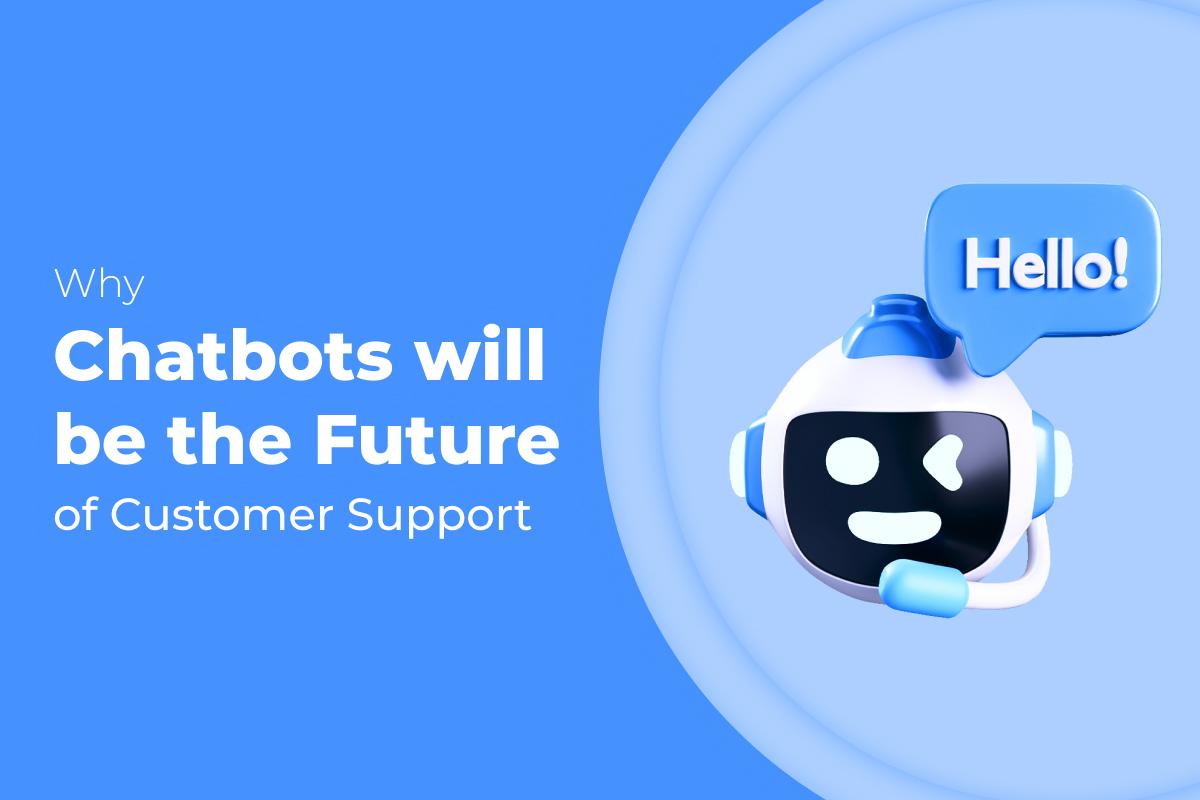
AI chatbots are transforming customer support. These virtual helpers have become an omnipresent solution for both customers and companies.
- Automation Breaks the Record: AI chatbots have recently become a very effective way to automate customer interactions. They can perform various tasks, from answering frequently asked questions (FAQs) to guiding users through self-service procedures. It not only enables human agents to focus on more complicated issues but also provides customers with instant help, day and night
- Upgraded Customer Experience: By delivering quick and efficient assistance, AI chatbots can considerably enhance customer experience. One does not need to sit on hold or navigate complex phone menus anymore if there is a question pending. Also, chatbots may customize their responses according to the particular needs of each client interacting with them.
- Reduced Operational Costs: Chatbots offer an economical method of providing support services for customers. The automation of repetitive tasks in organizations results in reduced numbers of human resources responsible for this function thus leading to considerable savings. Moreover, simple queries can be redirected by Chatbots hence allowing live agents to use their expertise in handling intricate cases that require humanity touch.
- Digital Imperative: Today AI chatbot solutions are not a luxury but must-have tools for businesses across industries as they need to be available and responsive all time around the world. This way businesses would provide constant support regardless of time zones or holidays which ensures seamless experiences at any given instance when customers reach out.
This is no longer just about futuristic thinking; AI chatbot solutions are now essential tools for businesses striving to succeed in today’s digital era because they improve customer experience while reducing operational costs.
Evolution of Customer Support
Traditionally, call centers were the mainstay of support service provision methods. Though these methods served well, they come with several setbacks explained below;
- Scalable Constraints: Traditional approaches cannot handle peaks of customer inquiries effectively such as phone lines getting clogged up or physical assistants being only capable of attending to a few customers at once. This could lead to elongated wait times and an irritating experience for customers.
- Lack of Availability: Phone support typically runs during business hours and if a customer needs help beyond this time, they are out of luck. Similarly, in-person support might require customers to physically visit their premises which can be not only tasking but also time-consuming.
- Inconsistent Standards: The quality of service provided may differ depending on the agent responsible for offering assistance to a particular client leading to discontentment.
- The Digital Age Wants More: Customer expectations have greatly changed in the digital era. Multiple channels with instant 24/7 support are what clients anticipate receiving from firms. These means are no longer sufficient for modern businesses to keep up with ever-growing customer needs.
- Enter AI-Powered Chatbots: AI chatbots break free from the limitations that accompany traditional forms of customer service provision being the way forward. There are several benefits associated with these smart virtual assistants:
- Available Round-The-Clock: Chatbots work non-stop throughout all days of the year including holidays. Consequently, whenever clients want assistance regardless of time zones, it is available.
- Scalability Response: At times there may arise rapid increases in customer questions that need immediate feedback hence they do not compromise on quality and speed by taking place simultaneously due to chatbots. Particularly, this serves as an advantage when businesses face varying volumes for contact center services.
- Personalized Interactions: Through an AI algorithm, chatbots can be personalized by learning from previous interactions and tailoring feedback to customer needs. Individualization of this kind greatly helps in raising levels of customer satisfaction and loyalty.
A significant change is taking place in the way customer support is provided as AI-powered chatbots are invented. Chatbots are set to revolutionize the digital ware experience by offering efficient, scalable, and customized solutions.
The Role of AI in Chatbot Development
AI acts as a special ingredient to upgrade a simple chatbot into a powerful customer support tool. Below are some key AI technologies that play a major role:
- Natural Language Processing (NLP): NLP allows chatbots to understand the subtleties of human language so that they can understand what a user’s query means even if it is poorly phrased or has spelling errors. For instance, using NLP techniques such as sentiment analysis and entity recognition helps these systems identify specific information contained within users’ messages and determine their emotional tone.
- Machine Learning (ML): ML enables chatbots to learn and improve constantly over time. By using algorithms trained on vast amounts of data that include conversations, FAQs, etc., chatbots can now identify patterns and recognize user intent more accurately; hence interfacing with more clients necessitates more relevant responses.
- Training Makes Perfect: The quality of responses provided by a particular bot heavily depends on its training data. This type of information comprises past user interactions and FAQs among other domain-specific knowledge bases used for training purposes. To create fully equipped bots capable of handling wider ranges of queries with greater accuracy developers have to train them using well-structured comprehensive data.
- Continuous Learning is Key: the finest AI chatbots aren’t static, but are ever-changing. This is because, through machine learning algorithms with embedded continuous learning features, such systems can look into their past interactions for areas where improvements should be made over time thereby enabling them to be more efficient and effective to customers.
- Advanced Solutions Emerge: The world of AI chatbots is rapidly evolving. For example, platforms like Chatwit employ cutting-edge artificial intelligence (AI) technologies to create more advanced chatbots. With the help of such advanced solutions, one can have complex conversations that integrate with multiple CRMs and support systems as well, which can personalize customer experience even better.
Chatbot development is at the forefront of pushing customer support into new frontiers by applying artificial intelligence. Given that AI technologies are evolving continuously, it’s reasonable to assume that chatbots will become smarter and more efficient at transforming the customer experience.
Benefits of Using Chatbots in Customer Support
The value proposition is high for organizations such as AI-driven chatbots whose purpose is to improve customer service in a more efficient manner. Some of the main advantages of this new technology include:
- Cost-Effectiveness: There has been a noticeable reduction in costs associated with customer service through the use of chatbots. The automation of simple queries and redirection of simple inquiries enable human operators to focus on complex issues hence lessening staffing needs, thus reducing overall support cost.
- 24/7 Availability: Today’s consumers are living in an “always-on” world and are never satisfied enough. Clients want instant gratification now even when they are away from offices or stores. This is why by providing assistance via these channels all year round, there can be a much higher level of customer satisfaction, given that seekers will be helped no matter where they live or what time it is over there among other things.
The power of AI enables chatbots to bring personalization to customer interactions. Chatbots can tailor the users’ needs by looking at their data and past interactions so that it may include suggesting products depending on the individual, providing targeted support steps or even remembering all previous conversations more coherently.
For example, if last time a customer engaged with a bank’s bot regarding resetting an online banking password, it would be able to offer a specific “reset password” choice when they next use it. This not only makes the journey easier for the customers but also promotes better interaction and affiliation with brands.
Therefore, chatbots are redefining customer support. Well-implemented AI chatbots deliver improved user satisfaction, less operational spending as well as efficient support infrastructures.
AI chatbots have the potential to create an amazing customer experience – here’s how:
- Seamless Interactions: Great customer experiences tend to have frictionless and efficient interactions. This is what chatbots are good at. Chatbots remove long waiting times and complicated phone menus by providing instant access to information and help thereby allowing people to get answers to their questions fast leading to more engagement from customers.
- Multi-channel Support: A modern-day shopper is omnichannel meaning that they expect support anywhere anytime on any platform of their choosing. Chatbots come in handy apart from being very versatile since they easily integrate with websites, mobile applications, or other popular messaging platforms such as WhatsApp or Facebook Messenger among others; this allows one to ask for assistance via his or her preferred channel hence making things convenient.
- Instant Responses: We live in a world where time is money. Customers want quick responses to their inquiries and waiting in line is one of those boring things nobody wants to go through. However, thanks to chatbots which give instant responses 24/7 that need has been catered for thus permitting clients not only to fix problems quickly but also to observe how much care is taken by companies towards offering excellent services to customers when the need arises.
Suppose a customer is going through a minor problem while using an online shopping app, for example. The chatbot integrated into the application can guide the user on how to resolve it right away without having to leave the app or reach out to customer care via another platform. Such smooth real-time assistance helps enhance customer loyalty and satisfaction.
AI chatbots are changing how businesses interact with their customers by making interactions simple, offering support in multiple channels, and providing instant replies. This enhances overall customer experience which in turn leads to increased brand loyalty and consumer satisfaction.
Case Studies
AI Chatbots are not just theoretical concepts; they have tangible effects on businesses across various sectors. Here are some examples that illustrate how powerful these chatbots can be:
1. KLM Royal Dutch Airlines:
- Challenge: The inability of KLM to process a large number of customer questions through various communication channels resulted in long periods of delay and end users had to have very bad experiences.
- Solution: To answer frequently asked questions regarding flight status, check-in information, or luggage weight limits, KLM has introduced an automated messenger on Facebook Messenger which is backed by artificial intelligence.
- Results: The KLM chatbot was able to divert numerous customer inquiries saving an average time response by 65%. Also, customers found it more convenient and faster to get answers.
2. Sephora:
- Challenge: Sephora intends to improve consumer involvement and personalized product recommendations through its website.
- Solution: What Sephora did was that they put an AI chatbot that interacts with shoppers who visit their site. This artificial intelligence can answer questions of the clients concerning products, provide suggestions based on previous purchases as well as browsing behavior, and even help people make appointments for beauty services or treatments that are done within stores.
- Results: Also, Saphora’s chatbot has been witnessed to have increased customer engagement on its website. This chatbot also being able to recommend personally has seen more conversions amongst Saphora customers recently.
These few examples only show how firms have turned to AI chatbots to benefit from substantial improvements in their customer support operations. It’s not just about cost-cutting; instead, bots are now significantly enhancing response times, satisfaction levels, and sales figures
Importantly, these metrics will vary depending on the company or industry and features that are implemented into the chatbot. However, the case studies provided above demonstrate huge possibilities of AI chatbots becoming game changers in terms of customer support thereby delivering a win-win scenario for businesses and consumers
Challenges and Solutions
However, even if there are a number of advantages to using AI Chatbots, there is still a problem involving their successful introduction. Below, you will find an outline of typical obstacles as well as ways to get over them:
- Challenge 1: Limited Language Understanding: There is particularly one big difficulty for chatbots which is fully understanding human language nuances. Even though natural language processing (NLP) has gone far bots may still experience problems like the use of slang or sarcastic comments from users with complex grammar structures.
- Solution: The growth in AI technology especially deep learning techniques has boosted NLP capabilities. While natural language variations are becoming more intelligible to chatbots it’s also possible that features such as opinion mining be included in systems so that they can read emotions when a client sends a message.
- Challenge 2: Some individuals are not comfortable with speaking to a robot. They even think such chatbots cannot handle complicated issues or do not have a human touch.
- Solution: Also, while employing these chatbots business firms should be frank about their objectives and limitations. Additionally, the design of the chatbot must be likable to users so that they do not feel embarrassed approaching it. This could be achieved through a well-designed chatbot that is conversational in tone and has clear prompts.
- Challenge 3: Limited Reasoning and Problem-Solving: At present, most modern state-of-the-art chatbots today have become good at handling scripted interactions and performing routine tasks. However, some complex cases still require more profound reasoning or problem-solving skills than existing bots can provide.
- Solution: Machine learning has opened opportunities for reason-based conversational agents as artificial intelligence advances; other ways are by integrating knowledge-based systems as well as CRMs which offer other customer service avenues because this AI assistant usually already knows how to solve different problems
- Challenge 4: Data Security Concerns: Chatbots gather information during interaction with clients hence data protection is vital.
- Solution: The foremost part businesses need to pay attention to when implementing bots is security for the data being processed by them. There should be tight security control measures put in place alongside adherence to privacy laws guiding this segment of the industry. It will require businesses to build trust with customers on how their data is collected thus being transparent about it
By recognizing these challenges and taking advantage of AI technology improvements, businesses can build and implement chatbots with reasonable functionality that are user-friendly and secure. This will open a way for a future where chatbots will be seamlessly integrated into customer support ecosystems for a more positive and efficient experience for both business owners and customers.
Future Trends
The world of AI-powered chatbots brims with possibilities. Here is a sneak peek into what lies ahead for virtual assistants:
1. Rise of Conversational AI: Advancements in conversational AI mean that chatbots can hold more natural talks including sarcasm, complex questions, etc. leading to very human interactions hence better customer experiences.
2. Seamless Integration: In the future, we expect automation technologies like chatbots to be fully embedded within other aspects of customer support functions. Think about a situation where after failing to address certain problems faced by clients sent to them automatically through the chatbot interface; they are redirected appropriately by the live agent staff who has all their previous chats saved in his/her computer. Moreover, integration with voice assistants will allow customers to interact with chatbots using voice commands thus making it hands-free and convenient for them.
3. The Power of AR/VR: There are new technologies such as Augmented Reality (AR) or Virtual Reality (VR) which can change how people interact with chatbots. For example, consider an AR-based service bot that helps a user visually troubleshoot an issue by overlaying instructions onto the real-world objects around them on its display screen. VR allows immersive training simulations for bots thereby expanding their knowledge base concerning complex situations encountered during services.
4. Personalization on Steroids: Chatbots have become highly personalized entities going forward due to exploiting AI capabilities alongside sophisticated data analysis techniques, allowing various engagements depending on particular traits of each buyer’s profile in terms of purchasing patterns or prior interactions over time creating therefrom attachment along with value to clients ultimately leading to stronger satisfaction and loyalty in brand terms.
5. Evolving Role of Human Agents: With the increased sophistication of chatbots, human agents may have different areas of concentration. Instead of dealing with simple inquiries, humans will be left to concentrate on complex issues that need deeper thought and involve a lot of empathy while creating rapport with customers. This collaboration between AI and human agents creates a solid customer support ecosystem.
The future looks bright for AI-powered chatbots. As AI technologies continue to evolve and integrate with other advancements, chatbots will become even more intelligent, helpful, and ubiquitous. This will undoubtedly transform the way businesses interact with their customers, creating a future of personalized, efficient, and delightful customer support experiences.
Conclusion
The topic of this blog has been about AI-driven chatbots that have the potential to revolutionize customer support. Additionally, we also discussed why conventional methods are ineffective and how they can be replaced by bots:
- 24/7 Availability: Anytime clients need help
- Enhanced Customer Experience: Making things simple using a personalized approach
- Reduced Operational Costs: Replacing manual activities with software solutions so that specialists handle complex queries instead.
- Continuous Learning and Improvement: Keeping one’s firm current in ever-changing consumer markets.
Lastly, we examined obstacles as well as prospects like conversational AI growth; seamless integration with other technologies; and the next wave of AR/VR for chatbot interaction again.
Definitely, AI will become the heart of future customer service. With this in mind, it is possible to create a funnier more personalized as well and effective experience through the utilization of artificial intelligence chatbots.
Transform your customer support into something extraordinary with these powerful AI chatbots!
Contact us today for a free consultation or demo!
Through Chatwit’s AI bot technology, some inefficient customer support operations could be streamlined while raising client satisfaction levels and preparing new prospects for prosperity.








